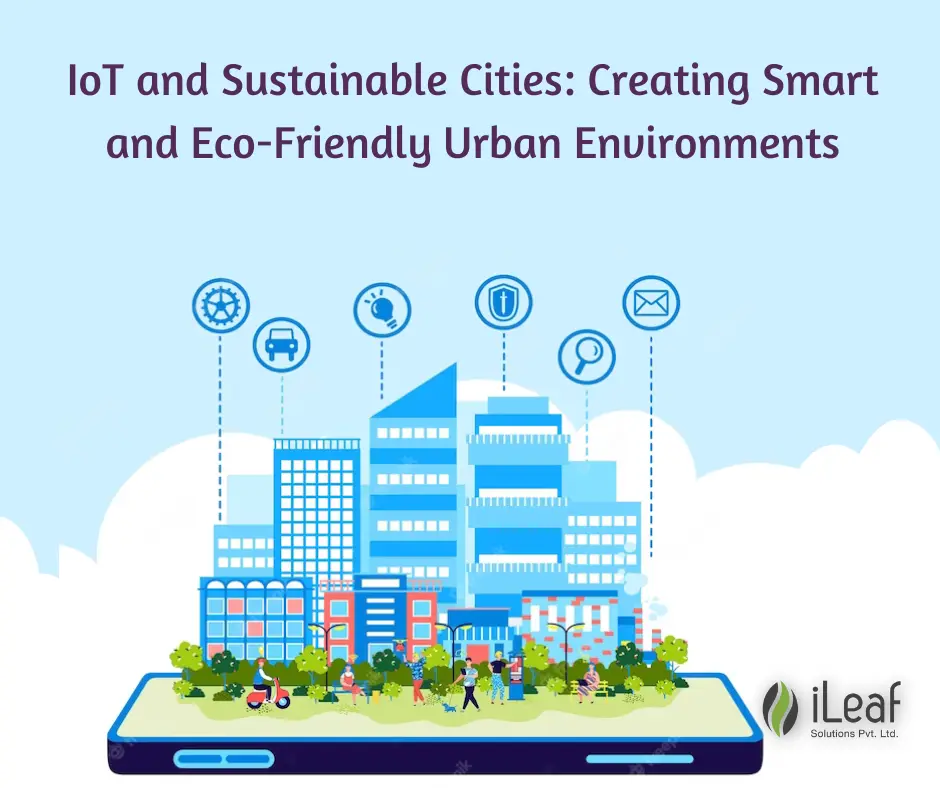IoT and Sustainable Cities: Creating Smart and Eco-Friendly Urban Environments

The Internet of Things (IoT) is a system of interconnected devices, vehicles, buildings and other objects that are embedded with sensors, software, and network connectivity to enable objects to collect and exchange data. This data can be used to monitor and control objects, as well as to make decisions and predictions.
IoT has the potential to revolutionize the way we live and work, and it is already being used in a variety of industries, including manufacturing, healthcare, and transportation. In recent years, there has been a growing interest in using IoT to create sustainable cities.
A sustainable city is a city that is designed to meet the needs of its residents without compromising the environment. Sustainable cities use resources efficiently, reduce pollution, and create a livable environment for their residents.
IoT can be used to make cities more sustainable in a number of ways. For instance, IoT can be used to:
Monitor and control energy usage.IoT devices can be used to track and measure energy consumption in buildings and homes. This data can be used to identify areas where energy can be saved, such as by turning off lights when no one is in a room.
Reduce water usage. IoT sensors can be used to monitor water usage in homes and businesses. This data can be used to identify leaks and other areas where water can be saved.
Improve transportation. IoT sensors can be used to monitor traffic conditions and provide real-time information to drivers. This can help to reduce traffic congestion and improve air quality.
Collect waste data. IoT sensors can be used to collect data on waste production and disposal. This data can be used to improve waste management and reduce pollution.
Improve public safety. IoT sensors can be used to monitor crime and safety incidents. This data can be used to improve police response times and prevent crime.
IoT has the potential to make a significant contribution to the creation of sustainable cities. By using IoT to monitor and control resources, reduce pollution, and improve transportation and public safety, cities can become more livable and environmentally friendly.
Here are some specific examples of how IoT is being used to make cities more sustainable:
In Amsterdam, the city is using IoT sensors to monitor water usage. The data collected by these sensors is being used to identify leaks and other areas where water can be saved. As a result of this project, Amsterdam has been able to reduce its water usage by 10%.
In Copenhagen, the city is using IoT sensors to monitor traffic conditions. The data collected by these sensors is being used to provide real-time information to drivers. This has helped to reduce traffic congestion and improve air quality.
In Singapore, the city is using IoT sensors to collect waste data. The data collected by these sensors is being used to improve waste management and reduce pollution. As a result of this project, Singapore has been able to reduce its waste production by 20%.
These are just a few examples of how IoT is being used to make cities more sustainable. As IoT technology continues to develop, we can expect to see even more innovative ways to use IoT to create sustainable cities.
Here are some of the challenges and opportunities of using IoT for sustainable cities:
Challenges:
One challenge is the cost of implementing IoT solutions. IoT sensors and devices can be expensive, and the cost of installing and maintaining them can be a barrier for some cities.
Another challenge is the security of IoT devices. IoT devices are often connected to the internet, which makes them vulnerable to cyberattacks.
Finally, there is the challenge of data privacy. IoT devices collect a lot of data, and it is important to ensure that this data is used responsibly and ethically.
Opportunities:
One of the biggest opportunities of using IoT for sustainable cities is the potential to reduce costs. By using IoT to monitor and control resources, cities can save money on energy, water, and waste.
Another opportunity is the potential to improve quality of life. IoT can be used to improve transportation, public safety, and environmental quality.
Finally, IoT can help cities to become more resilient to climate change. By using IoT to monitor and adapt to changes in the environment, cities can reduce the impact of climate change.
Overall, IoT has the potential to make a significant contribution to the creation of sustainable cities. By overcoming the challenges and seizing the opportunities, cities can use IoT to create a more livable and environmentally friendly future.














